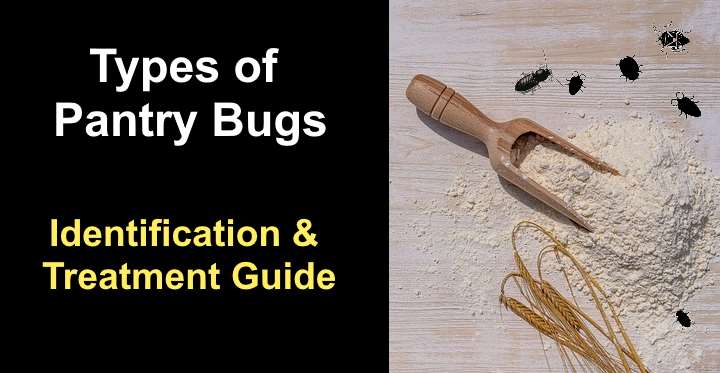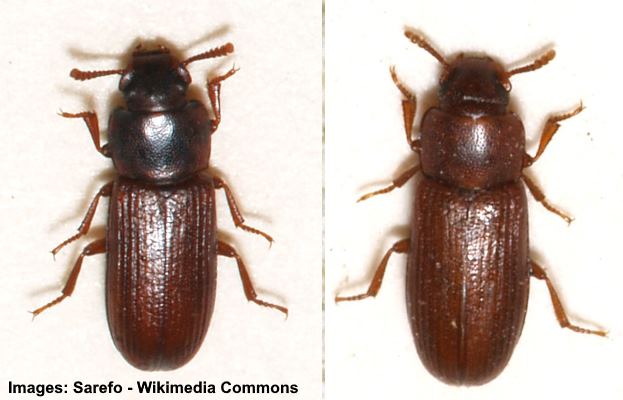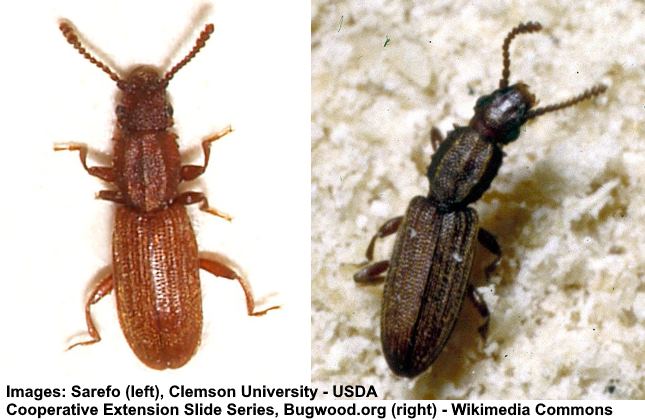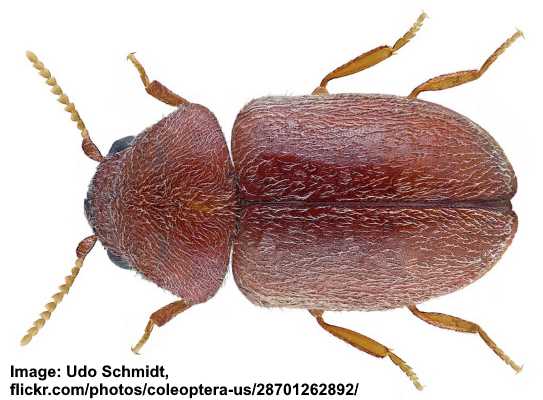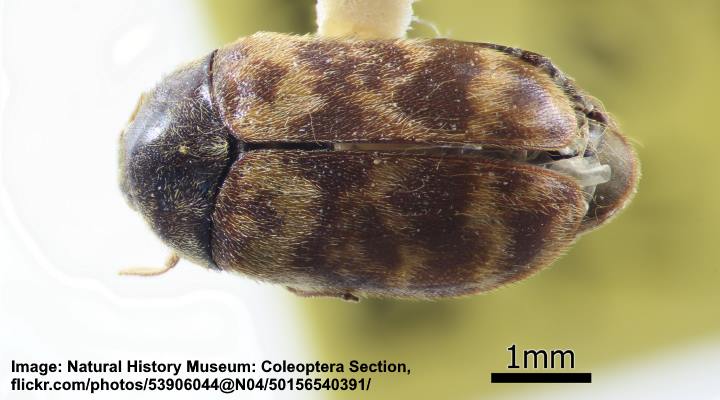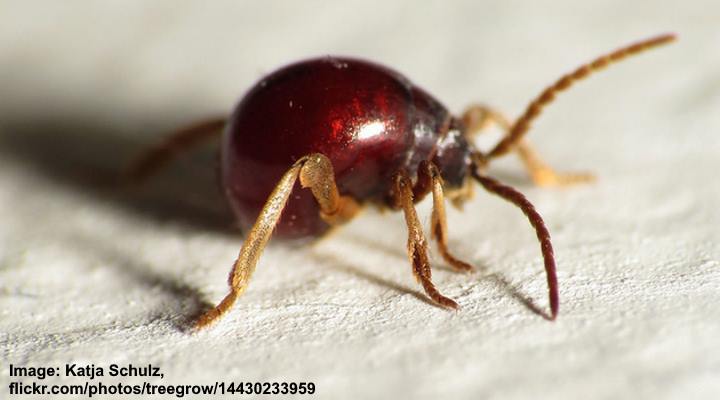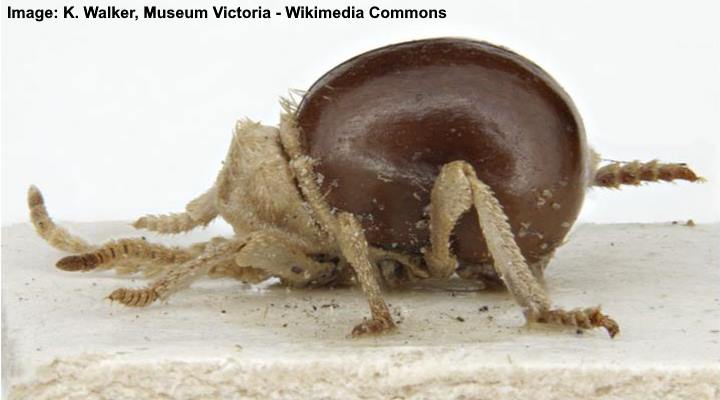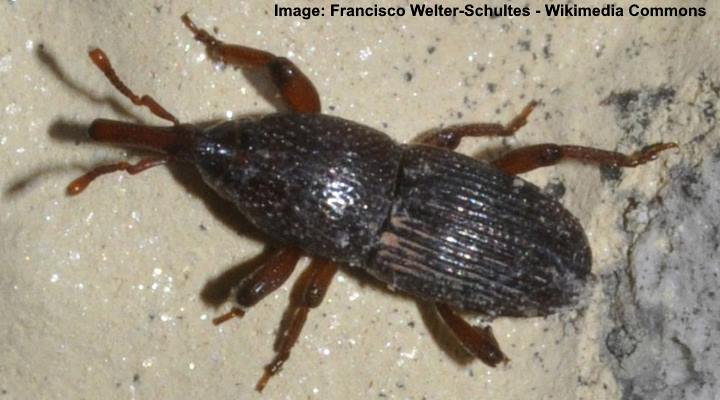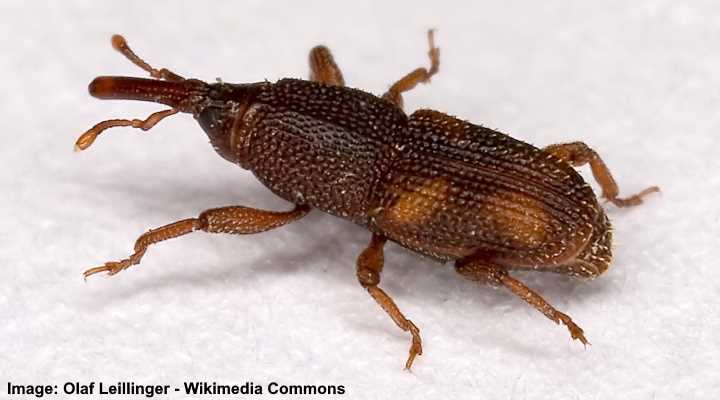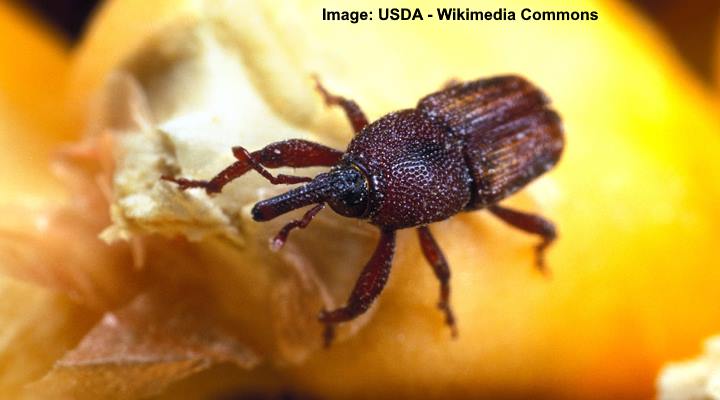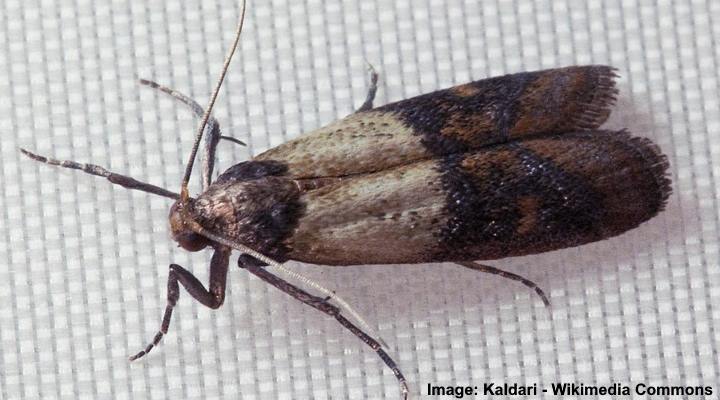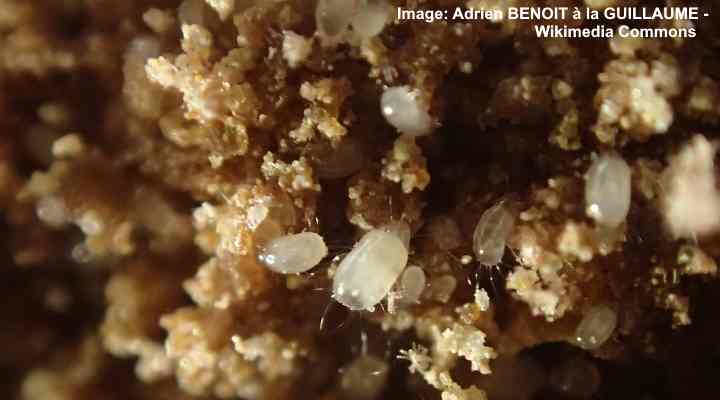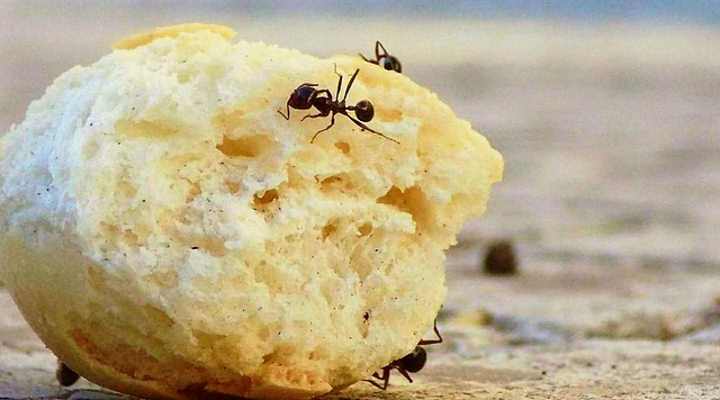Beetles, weevils, moths, ants, and worms are all examples of pantry bugs. They may infest foodstuffs and are tiny insects. Flour, dried grains, cereal products, pasta, rice, spices, crackers, and powdered foods are all home to these little pantry bugs. Unfortunately, pantry pests are difficult to identify and eliminate.
The eggs of these tiny creepy crawlies are typically microscopic, making them difficult to see. Pantry insects most commonly enter your food at the warehouse, processing facility, during shipping, and at the store. As a result, you are likely to have brought the pests home without realizing it. You may also miss the little black or brown bugs until you observe them crawling around your pantry because the eggs are virtually undetectable.
Discard contaminated foodstuffs and thoroughly clean all surfaces to treat minor pantry bugs the best way. Keeping dried or powdered foods in sealable, airtight containers can help prevent an infestation because disgusting little pantry bugs in the kitchen quickly multiply.
Pantry bugs don’t transmit illness and don’t bite you. But the idea of swallowing beetle, weevil, or moth eggs makes you feel queasy. This article contains information on identifying common pantry pest species that may be hiding in your cereals, flour, pasta, or rice. There are also helpful remedies for eradicating the pests for good.
The Most Common Pantry Bugs
Little brown or black beetles, weevils, and tiny moths are the most prevalent pantry pests. Indianmeal moths, sawtoothed grain beetles, rice weevils, pharaoh ants, and warehouse beetles are among the insects that may be found in food packets in kitchen drawers.
Unless you get rid of the pantry beetles and weevils quickly, they will quickly multiply. When you bring home food, the little creatures are more likely to enter your residence. Before you know it, those pesky insects are crawling through your cabinets and contaminating stored goods.
What Do Pantry Bugs Eat?
Pantry pests consume almost any dry or processed food. They contaminate more food in your kitchen than they consume, and they contaminate more food in your kitchen than they consume. Grains, cereals, dried fruits, spices, and nuts are at the top of the pantry beetle menu.
The pest’s popular name is typically a hint about where you’ll find them. Pantry pests feast on dry items in opened and unopened packets. Since foods like dried fruits, flour, rice, and cereals draw the little rapacious insects, they have quick access to open packages.
Pantry pests, on the other hand, might contaminate food items in warehouses or processing plants if they are in unopened packaging.
How to Keep Your Pantry Bug Free
The best way to keep pantry pests out of your kitchen is to store foodstuffs in airtight containers. When you bring home groceries, it’s best to transfer the food to plastic or glass containers.
In addition, keeping your kitchen clean includes cleaning up crumbs and tossing out stale or expired goods. Freeze food before storing it is another way to keep your pantry free of bugs and mites. To eliminate any eggs, larvae, or insects lurking in the packaging, for example, you can place dried foods in a freezer for four days.
Unfortunately, only opening, cardboard containers attract cereal pests, rice pests, flour pests, and other common pantry pest delicacies.
How to Get Rid of Bugs From the Pantry
Discarding any contaminated food is the first step to clean your pantry of tiny food bugs. There are likely many eggs waiting to hatch that you can’t see, even if there are just a few brown weevils or beetles present. Vacuum the cabinets and clean the surfaces with warm soapy water after that.
By combining equal parts of white vinegar and water in a spray bottle, you may use a pantry bug spray as an extra precaution. Afterwards, allow to dry on all surfaces in your kitchen. It’s also been reported that eradicating the bugs by putting down bay leaves.
To guarantee you’ll get rid of the pantry pests for good, take a few minutes to consider these points. First, put contaminated foods in a plastic bag and toss it into the trash outside. Finally, toss the dust bag in the outdoor garbage after you’ve vacuumed up the little pests.
Types of Pantry Bugs (With Pictures) – Identification
Little weevils, beetles, moths, mites, and ants are the most common species of pantry bugs. If you have a problem with moths or beetles in bagged flour, pasta, or grains, let’s say so. This identification guide can also help you get rid of them in that situation.
Pantry Beetles
Flour, dried grains, pasta, and cereals are all common food sources for pantry beetles. As a result, the beetle’s popular moniker is typically connected to the principal food source. Flour beetles, grain beetles, and drugstore beetles are examples of this. These little creatures have a hard exoskeleton, six legs, and a length of roughly 0.78 to 0.11 inches (2 to 3 mm).
Flour Beetles (Tribolium confusum and Tribolium castaneum)
Flour beetles (Tribolium confusum on the left and Tribolium castaneum on the right) are pantry pests that live in flour and kitchen cupboards. The flour, cereal, dried fruits, and bran are all eaten by the pantry beetle, which is 0.18″ (4.7 mm) long.
One of the most common pantry pests that infest flour packets is the rusty-red food pest. White worms found in flour might be red beetle larvae (cream-colored maggots) that measure 0.25″ (6.3 mm) in length, which you can see.
Remove infested food packages and clean all kitchen equipment to get rid of red flour beetles. To avoid future infestations, keep flour and other dried foods in airtight containers.
Pantry Bug Identification
The elongated oval body of the red flour beetle is a uniform rusty-brown color that helps to identify it.
Sawtoothed Grain Beetles (Oryzaephilus surinamensis)
The sawtoothed grain beetle is a 0.78″ to 0.11″ (2 – 3 mm) long pantry pest that varies in color from rusty brown to dark brown. The saw-like edges of its prothorax are a distinguishing feature.
The pantry bug has a triangular head and segmented antennae, as seen in the photos. Cereals, dried meat, seeds, chocolate, and tobacco are all common sources of pantry bug food.
The best strategy to kill sawtoothed grain beetle eggs, larvae, and insects is to freeze contaminated food items for four days.
Pantry Bug Identification
The slender body, sharp prothorax, and brown to black color distinguish the sawtoothed grain beetle.
Cigarette beetles (Lasioderma serricorne)
The cigarette beetle has a humped body and is drawn to dry tobacco products and dry foodstuffs. The little brown creatures are barely 0.13″ (3.5 mm) long and hence difficult to detect. It features two serrated antennae and tiny round black eyes, among other things.
It has an oval body covered in fine hairs. These pests, which feed on tobacco products, cereals, flour, and sage and are sometimes known as tobacco beetles, are winged pantry pests.
They’re also drawn to light sources and may fly around kitchens. The head and curved body of the larvae are yellowish-white, with a tan color.
Pantry Bug Identification
The stout, rounded look, humpbacked form, and bent posture distinguish the cigarette or tobacco beetle. These are another kind of pantry bug that looks a lot like drugstore beetles.
Warehouse Beetle (Trogoderma variabile)
The warehouse beetle is a little brown pantry bug with mottled dark and light brown markings on its fuzzy wing covers. It is a tiny pantry pest with light and dark brown patches. The oval brown insects are 0.12 to 0.18 inches (4.7 to 4.9 mm) long.
A chocolate brown head distinguishes the destructive pest. Cereals, seeds, sweets, animal foods, and grain products are all common sources.
Pantry worms, which are yellowish to dark brown in color and 0.25 inch (6.3 mm) long, are Warehouse Beetle larvae. Dried foodstuffs also include these white larvae.
Pantry Bug Identification
The brownish bug with spotted dark brown, beige, and tan colors on its back is known as the warehouse beetle.
Drugstore Beetle (Stegobium paniceum)
The drugstore bug has a tough shell and can be found in packages of dried meal items in the kitchen; it has two segmented antennae, longitudinal rows of pitted lines, and pits on its back.
Brown pantry bugs are 0.88 to 0.13 inches (2.25 to 3.5 mm) long, according to researchers at the University of Kentucky Entomological Museum. Seeds, dry pet food, beans, spices, and teas are all common places for these bothersome insects.
Little white hairy grubs with creamy-white heads, the drugstore beetle larvae are small. Drugstore beetles are most often seen on prescription drugs, as the name suggests. These insects, on the other hand, can chew through wool, leather, books, and hair.
They may also attack non-food items. You must eliminate the source of the infestation and thoroughly clean the affected surfaces in order to successfully get rid of pantry bugs. Biscuit beetle, biscuit weevil, and bread beetle are some of the other names for the insect.
Pantry Bug Identification
The stretched oval brown body, short three-segmented antennae, and rows of pits on the wing covers distinguish drugstore beetles.
Spider Beetles
Pantry spiders look like spiders and are little black and brown spiders. Rounded bodies, long, segmented antennae, and a spider-like appearance are the identifying characteristics of spider beetle bugs. Depending on the species, pantry bugs may be 0.04 to 0.19 inches (1 to 5 mm) long.
Pantry bugs are classified as three distinct species of spider beetles.
- Smooth spider beetle (Gibbium equinoctial)—The body of this bright scarlet beetle is enlarged and rounded, with light brown legs and antennae.
Smooth spider beetle
- American spider beetle (Mezium Americanum)—A fuzzy-tan beetle with antennae and legs that are chocolatey-brown.
American spider beetle
- Whitemarked spider beetle (Ptinus fur)—An oval body with ribs, white specks, and fine beige hairs characterizes this dark-brown pantry bug.
Whitemarked spider beetle
Pantry Weevils (Flour Bugs)
A specific kind of beetle with a extended snout is known as a pantry weevil. The tiny vermin develop from worm-like larvae that emerge in contaminated dried grains, cereals, rice, beans, and nuts and mature into pantry pests.
Rice weevils, granary weevils, maize weevils, and bean weevils are the most common pantry pests.
Granary weevils (Sitophilus granarius)
The wheat weevil or grain weevil is a pantry bug with a reddish-brown body with ridges and stumpy brown legs that is distinguished by its brown body with ridges. The granary weevil’s ridges on its abdomen and pitted markings on its prothorax are two distinguishing characteristics.
The length of these pantry weevils varies from 0.12 to 0.2 inches (3 to 5 mm). Pantry bugs include granary weevil larvae since they dwell inside packets of roasted grains and cereals. White with tan heads, the worm-like bugs are creepy.
Pantry Bug Identification
With a brown mahogany body, reddish-brown limbs, and a long snout, the granary weevil is a tiny pantry bug.
Rice weevil (Sitophilus oryzae)
The rice weevil has a pitted body and a long snout, making it easy to identify. It’s a little brown pantry bug. The wing coverings of this pantry bug look orangey-red, according to the photos. The rice weevil is 0.11 to 0.18 inches (3 to 4.6 mm) in length and has a flat head with eyespots on the sides.
Its larvae reside in infested grain kernels, which are cream-colored with a black head. Barley, rye, wheat, and other cereal items are frequently infested with rice weevils. Pantry insects may also be found in pasta, cashews, peanuts, and birdseed, among other things.
Pantry Bug Identification
The rice weevil shares the same snout and elongated oval body as other pantry bug weevils.
Maize weevil (Sitophilus zeamais)
The maize weevil is a cabinet bug with a reddish-brown body that can be found infesting dried corn products. The maize pantry weevil, on the other hand, has clearly defined ridged patterns on its wing covers, unlike the rice weevil.
Maize weevils range in length from 0.09 to 0.2 inch (2.3 to 5 mm). The tail end of maize weevil larvae is creamy white, with a slight taper.
Pantry bugs infest grains such as buckwheat, rice, wheat, peas, and cottonseed, both larva and adult forms. These insects can be found in pasta, grain packets, and preserved apples in your pantry.
Pantry Bug Identification
The dark brown color and lighter ridged patterns on the maize weevil’s back differentiate it from other weevils.
Bean weevils (Acanthoscelides obtectus)
The bean weevil is a pantry bug with a flattened, egg-shaped body, mottled brown patterns, and two segmented antennae that has a beige body rather than the elongated snout typical to weevils. Bean weevils have no distinguishable snout, which is a distinguishing feature.
Between 0.78″ to 0.2″ (2 to 5 mm) long, the largely oval bodies are roughly spherical. Bean weevil larvae could be seen in dried beans and peas if you see milky-white worms or white grubs with brown heads.
Pantry Bug Identification
The oval, egg-shaped body and tiny triangular head with no snout distinguish the bean weevil from other beetles.
Pantry Moths
Pantry moths are little, winged insects that deposit eggs in dried cereals, flours, grains, spices, and seeds. Tiny worms or maggots hatch from the flying food pests. Bugs contaminate meals by leaving behind frass or droppings while they are in the larval stage. Indianmeal moths are the most common pantry moth.
Indianmeal Moth (Plodia interpunctella)
In grain products, the brown and gray Indianmeal moth is ubiquitous in kitchens and pantries. The coppery-colored and gray-beige wings of the pantry bug, which ranges from 0.3 to 0.4 inch (8 to 10 mm), identify it. Silky webs, dead skin, and frass are all indications of Indianmeal moth infestations in cereals, grains, and flour.
Indian meal moth larvae contaminate grains, which is why they’re called “meal moth larvae.” When they’re young, the little white larvae are difficult to spot. You can see that they have white bodies and brown heads under a microscope, though. Before pupating, however, they may grow up to 0.55 inch (14 mm) long.
Flour Mites
A grain and flour mite with an elliptical body, talonized legs, and fine hairs. Pantry mites, on the other hand, are invisible to the naked eye because they are too tiny. Depending on the species, the white bugs are 0.013 to 0.017 inches (0.33 to 0.43 mm) long.
Flour mites are only visible when a serious infestation occurs. After that, you may see a white dust on your kitchen surfaces. Microbial contamination can be found in all kinds of cheese, flour, powdered milk, and yeast.
Pantry bugs leave behind a distinct, bitter taste or an unpleasant stench on infested objects.
Pantry Ants
Pantry ants are attracted to a range of kitchen leftovers because they seek out sweet foods and water. Little creatures scurrying along lines or swarming around kitchen surfaces after leftovers may be noticed. Pantry ants are drawn to foods like cookies, crackers, jelly, grains, kibble, and much of what you have in your pantry.
Pantry ants are divided into several distinct types, as follows:
- Pharaoh ants
- Carpenter ants
- Odorous house ants
- Pavement ants
- Little black ants
Cockroach (Periplaneta)
Cockroaches are one of the most disgusting pantry bugs, as shown on the left by German roach (Blattella germanica) and on the right by American roach (Periplaneta americana). Slender reddish-brown roaches with thin legs and wandering antennae are the most common cockroaches found in pantries.
Common types of disease-carrying pantry cockroaches include the following:
- Common cockroach (Blattella germanica)
- American cockroach (Periplaneta americana)
- Brown cockroach (Periplaneta brunnea)
